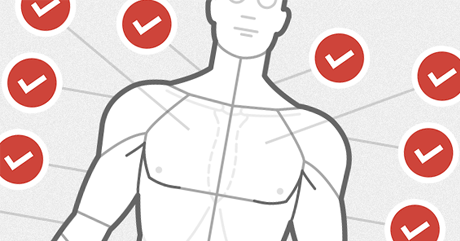Location, Location, Location
Last Week
Last week we launched a new blog series focusing on the need for creating a habit of reviewing Patient Care Report documentation.
As we unpackaged that discussion, we drilled into the documentation needed to support medical necessity and as such the documentation needed to support the ultimate diagnosis coding of your EMS incident. It’s critical for your billing office to be able to quickly and precisely apply the correct ICD-10 diagnosis code that most adequately describes your patient’s illness or injury.

The Where?
Because the ICD-10 coding takes into account the location of the illness and injury, our focus today is on the “where” part of the equation.
This is probably truer of injuries than illnesses, but there is a component in the illness realm as well.
Illness
Consider that you may be transporting a patient with decubitus ulcers on the right buttocks versus the left buttocks. You may be transporting a patient that has lung cancer and you’ll need to pinpoint if the cancer is located in a particular area of the lung fields- upper, lower, right or left.
There’s always the documentation of internal pain with illnesses. It’s quite simply to pinpoint that the patient has pain in the upper left quadrant of the abdomen or is suffering head pain just above the left eye (of course, with pain we are using a 1-10 scale pain rating as verbalized by the patient- right?)
Or you can make your written description relative to other body parts. For example:
“Upon palpation of the abdomen, we found tenderness just proximal to the left of the navel.”
Injury
But with injuries it’s cut and dried…well at least it’s supposed to be. Injuries typically allow us to use descriptive words in our documentation that pinpoint the location of the injury.
This is just one example of probably a thousand potential combinations.
“Arrived to find a 23 year old white female who had fallen while participating in a high school field hockey game. The patient complained of pain to her left lower extremity. Upon examination we noted angulation of the left tib/fib area distal to the knee approximately three inches.”
Structure of an ICD-10 Code
What we billers need EMS providers to understand is under this new coding version there are numeric extensions that specifically refer to the etiology or cause of the illness or injury, anatomic site and severity of the illness or injury. We must know these details in order to apply the best code that fits the scenario when preparing the claim.
Look at a closed femur fracture, for example. The code itself is S72.92XA. Bear with us while we explain how this works.
The “S” that begins the code is a set of codes use for Injuries. Think of it as the injury “bucket” or category. Following the initial letter is a two-digit combination, in this case “72” which is a sub-bucket for the femur so it denotes the anatomical location.
Next you see the decimal which separates the category from the specifics. In this case the specifics are the circumstances contributing to the injury and the anatomical location. So the “9” signals the fracture scenario and the “2” denotes the fracture is to the left femur.
The final two characters in the code is the “X” which is a place holder followed by the letter “A” which indicates that it is an initial encounter as in with EMS we treated and transported immediately following the patient’s fracture injury scenario. Otherwise stated, it’s an added code extension reserved for obstetrics, injuries and external causes of injuries.
Head spinning yet?
Is your head spinning yet? No worries. Relax!
As an EMS provider, unless you also pull time in the office you don’t have to worry about any of this. But, your billing office worries about this a lot.
We end this part of the discussion by reminding all of you out there on the street to prepare your Patient Care Report overall with enough detail that the billing office does not need to stress over the details and can apply the correct code the first time, every time.